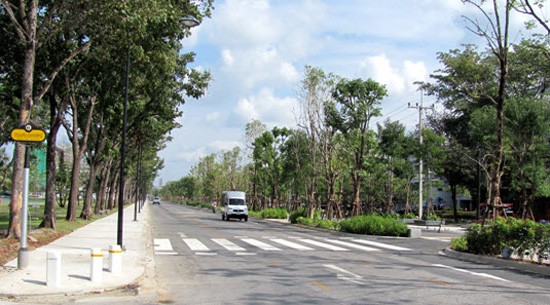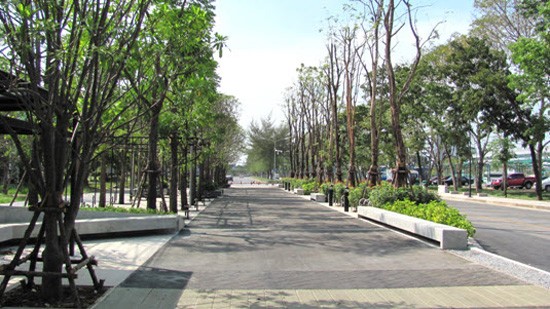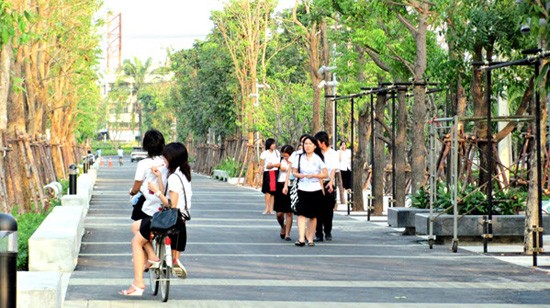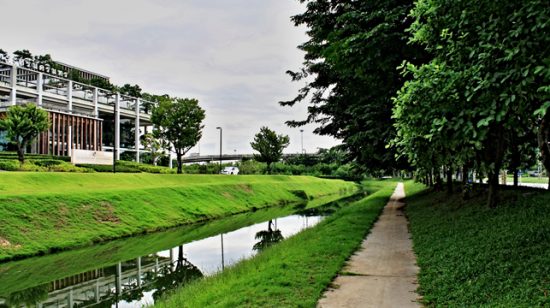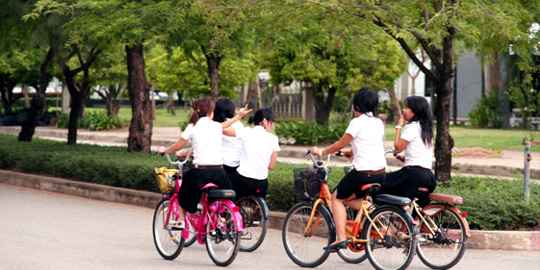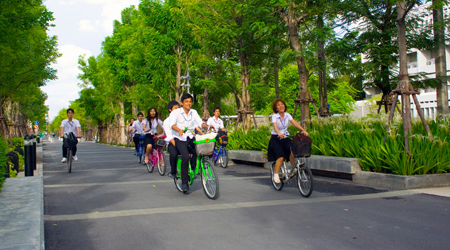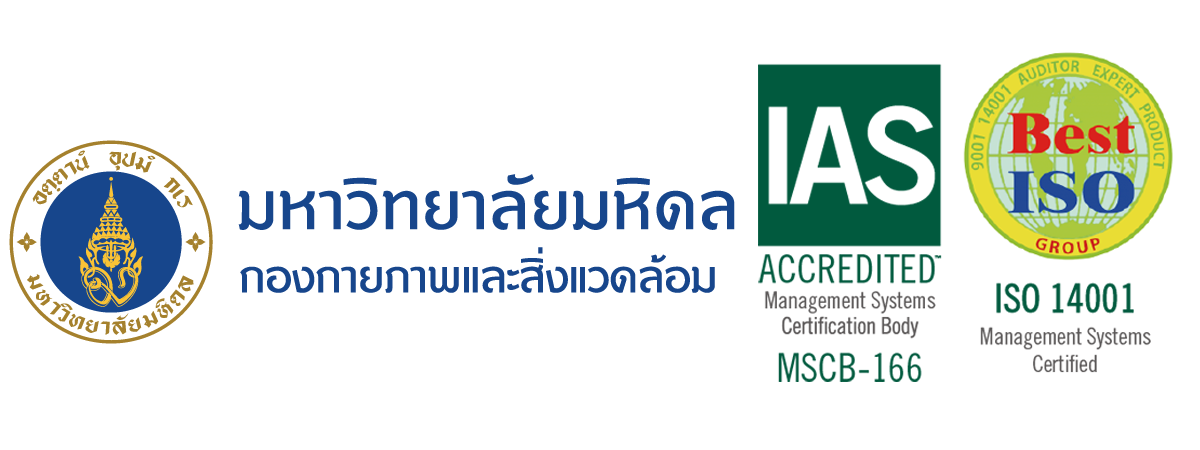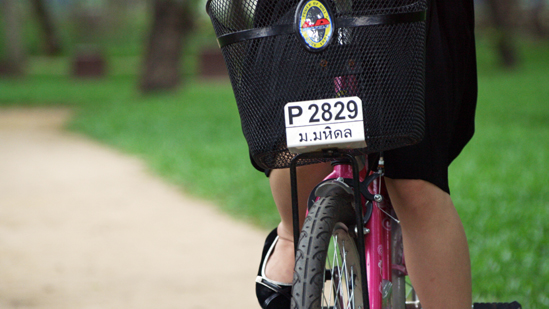
According to the university’s policy to improve Salaya Campus’ environment and enhance the quality of life of MU students and staff, the university has intended to push walking and cycling as primary means for commuting on campus. One of the most significant projects to support the policy is the reconstruction of streets on campus. Vehicle lanes are reduced from 6 lanes to 3 lanes while sidewalks are expanded to encourage people to walk and use a bicycle instead of motorized vehicles. Along the sidewalks on campus, lots of big trees are grown to provide shade for pedestrians and cyclists making them feel more refreshed and comfortable. Moreover, many outdoor spaces are created to support various kinds of activities and gatherings enhancing liveliness and variety to campus life. This “Green Lifestyle” the university has attempted to push forward is in conformity with the policy of the Toronto Charter for Physical activity: a Global Call for Action which focuses on wellbeing, physical and mental health, preventive actions and improvement of social connectedness and quality of life.
On Salaya Campus, more than 7,000 bicycles are used every day. The scene of students riding bicycles along cycling lanes becomes a familiar picture for everyone. Nevertheless, the university still desires to reduce the use of motorized vehicles on campus, and encourage people to use bicycles—first among MU students and staff, then expanding to community members nearby—by improving the campus environment to become more convenient for cyclists. Cycling lanes are improved and bicycle racks are provided around the campus. Also, there are public bicycles (white bikes) prepared at the bicycle service center to facilitate MU students and staff who do not have their own bicycles. Moreover, campaigns and various forms of activities are initiated to inform and encourage people to use bicycles. Aside from preparing fundamental physical structures and services, the university has intended to pass on the concept of “green lifestyle” to every member via campaigns and publications with the hope that the “cycling trend” will become widespread not only within the campus but also to communities nearby and other universities.
